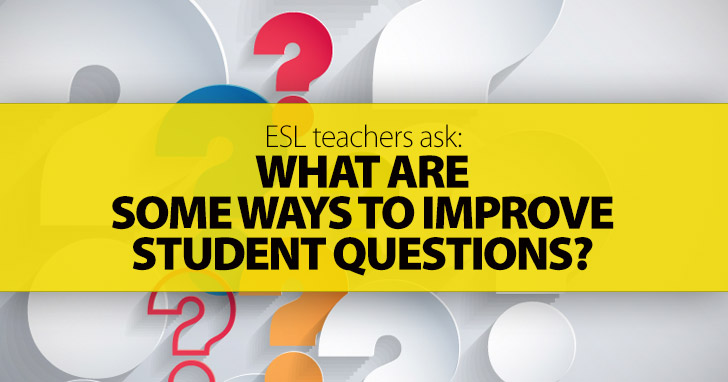ESL Teachers Ask: What Are Some Ways to Improve Student Questions?


Questions are present in every conversation, since there are things we need to know and want others to know as well. For many ESL students, asking questions in English is not always an easy task. One of the complications is that word order changes from that of the original sentences. Also, we use auxiliaries that change depending on the verb tense. I'm sure many have heard questions from students like, “You go to the movies often?” instead of “Do you go to the movies often?” So, why are questions important?
For all these reasons, practicing questions is a definite must in the ESL classroom. Take a look at some great techniques that will make this task much easier for you and your students.

This is an amazing technique to use with young kids and also with adult students that are beginners. It is a step by step guide that clearly demonstrates how the question should be asked. That's why it takes a lot of pressure off the student. What you need to do is ask a question to the student. After they answer it, you ask the same question again and instruct them to repeat the question. After this you can be the one who answers the question or have another student answer it. Let's take a look at an example.
T: Where is the book?
S: It is on the table.
T: Excellent! Now you, where is the book? Repeat please.
S: Where is the book?
T: Great! It is on the table.
Yet another awesome technique you can use to have students ask questions. This one guides students, but gives them a bit more freedom to make language choices. Here the teacher provides an answer and the student has to come up with the question that corresponds to that answer. There might be more than one question to an answer, but that shouldn't confuse your students. You can use it to your advantage. Take a look at the following examples.
T: The blue book is on the table. Question please.
S: Where is the blue book?
Another example is.
T: Jane went to the market. Question please.
S: Where did Jane go? Or Who went to the market?
For students in higher levels, there is another technique you can use. Students with more skills should have much more freedom to make choices. With this technique, they make all the choices themselves since they are simply instructed to ask questions about a specific topic. Always keep in mind though, there must be a clear context. There are several ways to implement this.
It can go on an on with that same situation or a different one.
There is always much we can do to make learning easier for them. Some might need more guidance and others less. We always have to be prepared.